The wireless wonder: Technology’s journey toward high quality and sustainability
Ole Witthøft
Ole Witthøft
 Over the past three decades, the internet and wireless technology have undergone a revolution that has transformed how we experience sound, communication, and entertainment. From the early days of 14.4 kbps dial-up connections to today’s gigabit speeds and studio-quality wireless audio, we’ve entered an era where quality and sustainability go hand in hand.
Over the past three decades, the internet and wireless technology have undergone a revolution that has transformed how we experience sound, communication, and entertainment. From the early days of 14.4 kbps dial-up connections to today’s gigabit speeds and studio-quality wireless audio, we’ve entered an era where quality and sustainability go hand in hand.
In 1993, a typical internet connection via modem was limited to 14.4 kbps. Today, fiber connections offer speeds of up to 1 Gbps — an improvement of over 69,000 times. This makes it possible to stream high-resolution music and video, play online games without lag, and work in the cloud with instant responsiveness.
Music streaming services like Tidal and Qobuz have set new standards for audio quality. While MP3 once dominated with 128–320 kbps, these platforms now offer FLAC streaming at up to 24-bit/192kHz, equivalent to up to 9,216 kbps — nearly 30 times better than CD quality and over 70 times better than MP3 at 128 kbps.
Services like Tidal Connect and Qobuz Connect allow users to stream directly from smartphones to compatible devices — in a quality that surpasses physical media like CD.
WiFi technology has evolved dramatically since 1997, when the first standard offered just 2 Mbps. With WiFi 7, launched in 2024, maximum speed reaches 46 Gbps, enabling multiple 4K streams, real-time gaming, and high-resolution audio simultaneously.
WiSA (Wireless Speaker and Audio Association) has redefined wireless sound by offering up to 8 channels of uncompressed 24-bit/96kHz audio (4,608 kbps per channel). This enables Dolby Atmos and surround sound wirelessly — with quality matching or exceeding traditional wired setups.
The streaming industry — with giants like Spotify, Tidal, and Netflix — is not only a driver of entertainment and culture but also a player in the global climate effort. Behind every stream lies a complex network of data centers, which have historically been energy-intensive. Today, that picture is changing rapidly.
Spotify has commited to reaching net-zero CO₂ emissions by 2030, addressing Scope 3 emissions – those outside its direct control. In 2024, the company reported 195,027 tons of CO₂e and launched initiatives across product development, marketing, and workplaces to reduce impact. Spotify also engages users through climate-focused podcasts and projects like Sounds Right where nature received royalties for environmental protection.
Tidal migrated to green cloud data centers powered by renewable energy. Using technologies like serverless pipelines and containerization, Tidal reduces energy consumption while maintaining high-quality streaming.
Netflix invests in energy-efficient data centers and renewable energy, collaborating with DIMPACT and the Carbon Trust to reduce streaming impact. Research shows that data centers account for only 1% of Netflix’ total streaming emissions, while up to 90% comes from users’ own devices.
Netflix is also working to promote energy-efficient hardware and inform users about their role in climate responsibility.
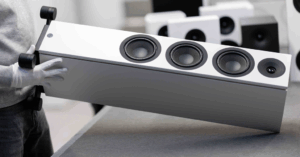 Industry-wide collaboration
Industry-wide collaborationInitiatives like Greening of Streaming bring together players across the industry to develop shared standards and solutions.
The organisation focuses on principles such as no greenwashing, measuring energy use, and developing energy-efficient technologies.
There’s also growing attention on live streaming, which is expanding rapidly and placing new demands on networks and data centers.
The wireless wonder represents a vision for the future: better audio quality, faster connections, flexible solutions, and growing environmental awareness. From studio-quality streaming to wireless surround sound and carbon-neutral data centers, technology paves the way for a richer and more sustainable future.
Explore our technology:

Silverback 1 - Wireless bookshelf and On-wall speaker
A compact speaker designed for wall or shelf mounting with a built-in 80-watt total amplifier power, delivering powerful and detailed sound. It is proof that you can enjoy big sound – without big speakers. Dimensions: 21 × 32.5 × 13.5 cm.
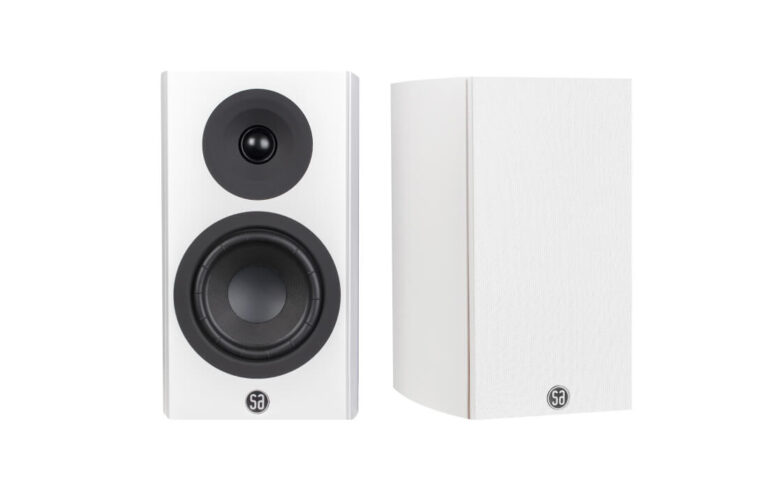
Legend 5.2 silverback DS – Wireless bookshelf, stand, and On-wall speaker
A powerful compact speaker designed for shelf, stand or wall mounting with a built-in 150-watt total amplifier power, delivering every tone, nuance and breath in the music with clarity and depth. It is proof of exceptional musicality – even at low volume levels. Dimensions: 36.5 × 49.5 × 42.5 cm.
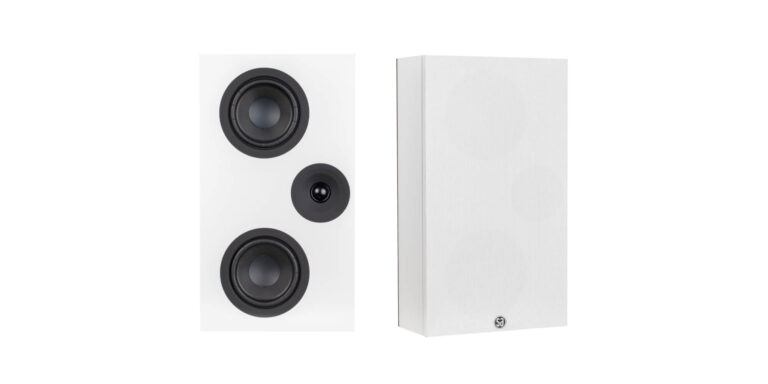
Legend 7.2 Silverback – Wireless On-wall speaker
An EISA Award–winning speaker designed to hang on the wall with a built-in 225-watt total amplifier power, delivering advanced sound without taking up floor space. It is proof that wall-mounted speakers can also create high-end music experiences. Dimensions: 28.6 × 47 × 15.4 cm.
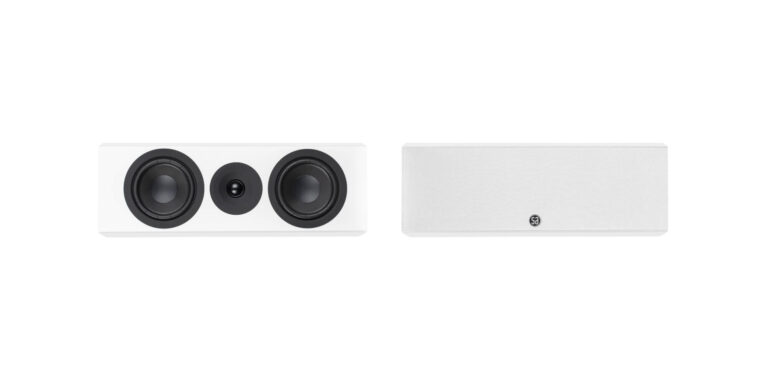
Legend 10.2 silverback – Wireless center speaker
A powerful center speaker designed for shelf or wall mounting with a built-in 225-watt total amplifier power, delivering every tone and every whisper with clarity and depth. It is proof that groundbreaking technology and captivating sound go hand in hand. Dimensions: 50.4 × 19 × 26.5 cm.
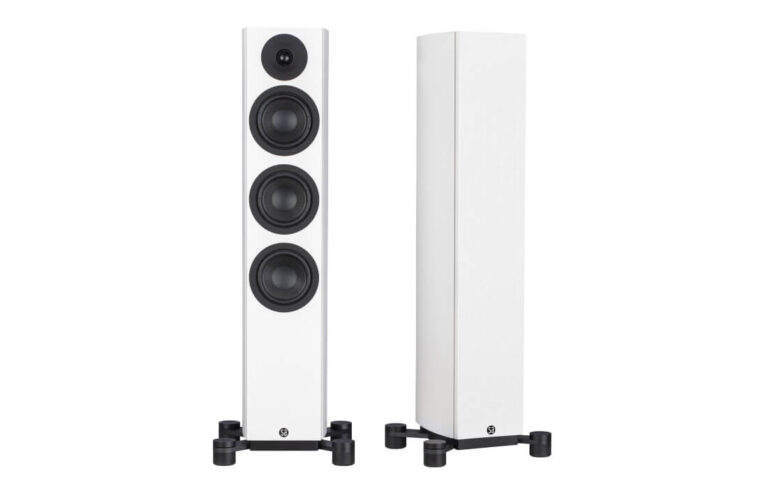
Legend 40.2 Silverback DS – Wireless floor speaker
A revolutionary speaker designed for floor placement, with a built-in 300-watt total amplifier, delivering a pure sound experience that brings you closer to the artist than ever before. It is proof of a captivating experience that traditional loudspeakers cannot match. Dimensions: 19 × 95.5 × 26.5 cm.